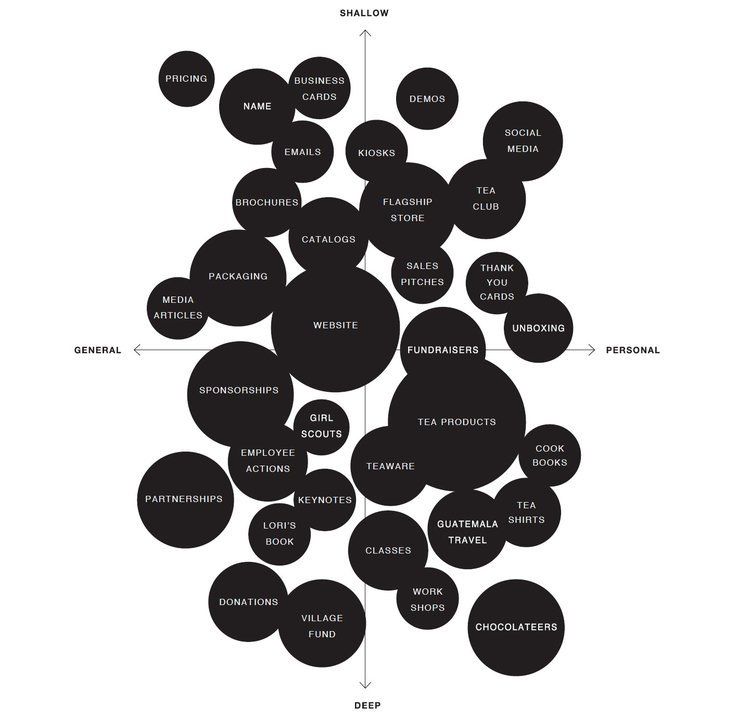Three Senses that Create Positive Brand Perception
When people ask you to describe the organization for which you work, what words do you use to describe it? I’m not referring to your position statement or pitch (a brief statement that declares why your organization is the only one that serves people for a specific purpose and outcome).
I’m referring to the personality of your organization—the human qualities and attributes that embody the purpose, character, and culture of your organization.
Words like amazing, exciting, caring, bold, creative, decisive, friendly, goal-oriented, inclusive, innovative, principled, radical, or visionary convey meaning.
Each characteristic invokes an interpretation in the mind of the listener; people form a personal brand perception and emotional connection to what your brand stands for, believes in, values, and aspires to, based upon what they believe each word means from their point of view.
Whew. That fact alone makes branding a challenge, even for organizations that understand how their customers perceive them.
If you don’t understand what your customers perceive about your brand, it makes it nearly impossible to ensure that how you describe your organization will align with what people already believe—or what they want to believe—regardless of what you tell them.
Engage the Senses
Is the tone of your communications — your organization’s voice — positive?
When design communications convey hope, they challenge the listener to change the way they think or act or to agree with what they are seeing and hearing.
Intentionally or not, all communication connects the purpose, values, vision, and impact of an organization to employees, stakeholders, and customers.
Words, images, and sound are powerful elements of design. Words and images combined with beautiful typography are more persuasive than text on a page. Audio brings words to life with emotion and expression. Video combines all three elements to engage sight and sound.
There is great value in engaging all of the senses to nurture a positive and trustworthy perception of your brand.
Two examples of touchpoints can help you understand what they are and the role they serve:
Marty Neumeier: Brand Experience Map (From The Brand Flip)
Raise Your Voice Touchpoint Engagement Continuum (From Raise Your Voice: A Cause Manifesto)
We call the methods that connect with people touchpoints for a reason.
When you engage every sense and touchpoint together, you will enhance your audience’s positive brand experience. Most communications engage three of the primary elements of sensory branding:
The Sense of Touch
- The sense of touch impacts how people perceive brands and are a crucial part of our sensory experience. Touch influences emotion and decision making and has the potential to deepen engagement.
- “In humans, touch represents a powerful form of non-verbal communication. Our sense of touch plays a fundamental role in daily life, from learning about objects to communicating with other people. — Dr. David Eagleman, Sappi Paper
The Sense of Sight
- According to IMPACT: International Journal of Research in Business Management, color alone can increase brand recognition. We make our first impressions within 90 seconds of the initial viewing, and between 62%-92% of that impression is based on color alone.
The Sense of Hearing
- Have you ever been in a store or restaurant where the music choice or volume annoys you? Ever visited (and immediately left) a website that begins playing audio without your permission? Sound evokes memories and experiences and sets the tone for positive brand experience.
Don’t Overlook the Senses of Smell and Taste
- Freshly baked bread, the aroma of flowers, the taste of your favorite coffee or food—invoke memories and perceptions of your favorite restaurant or experience. No brand wants to be known or characterized as bland, tasteless, or offensive because of these senses.
The Intangible Sense: Emotion
All the sensory perceptions contribute to what we feel and perceive, filling us with the intangible: emotions and feelings that may be difficult to articulate and explain. Sight, sound, smell, and touch awaken emotions and feelings that bring back memories (positive and negative). With that in mind, should our goal with creating brand perception focus on how we want people to feel to create empathy and connection with a brand or organization?
Importance of Brand Perception
The people whom you are trying to persuade to buy from you or donate to your cause already know there's a challenge somewhere in their lives or a problem in the world that you are trying to help them overcome.
Get the tools you need to build a positive and optimistic brand that engages and inspires
People care more about what matters to them than they do about what you can do for them. If your product or service makes their life better, helps them fulfill a personal goal, or empowers them to make somebody else's life better they will be more interested in how you can help them.
A culture of positive communications will affirm to your audience that you understand what matters most to them, through brand perception measurement and a practice of actively engaging with customers at every touchpoint.
A positive culture of communication is about more than voice, culture, design, and personality. A positive approach to communications engages people to believe they can make a difference through their purchasing decisions or actions.
A positive approach to inspiration and communication impacts an individual’s perception of your brand and motivates them to act.
Improving brand perception begins with understanding what customers perceive and by listening to your customers. The role of communications is to understand and communicate what your audience is listening for, not what you think they need to hear. When you know what shapes brand perception, it strengthens your business.
Positive messages inspire hope and challenge people to take action.
Be Positive. Optimism is a better motivator than pessimism.
Do you have a hard time explaining what your company does or why your brand matters to people?
If you struggle to grow your business, you’re not alone. Aespire can help you create a clear message and brand that helps you grow your business. Contact us today for a consultation with a StoryBrand Certified Marketing Guide.
Get a Free Comprehensive Marketing Assessment
Stop hoping your marketing will sort itself out.
- Complete this free assessment in 15 minutes.
- Review your custom report (and schedule a 30-minute review) to diagnose what’s happening.
- Create an action plan to get your marketing back on track.









